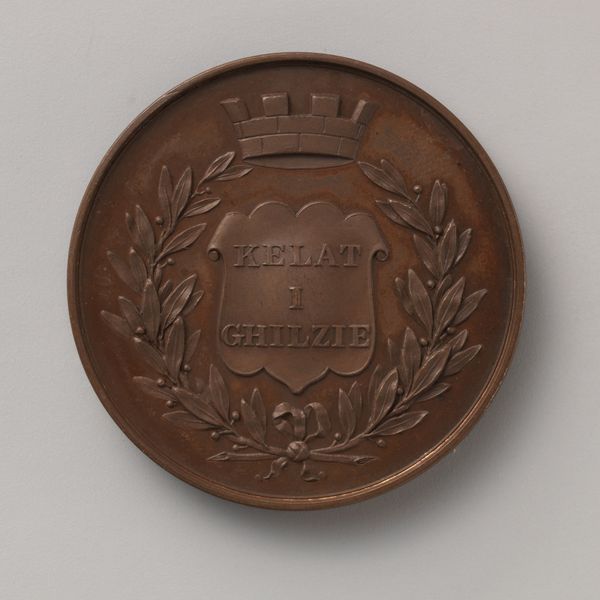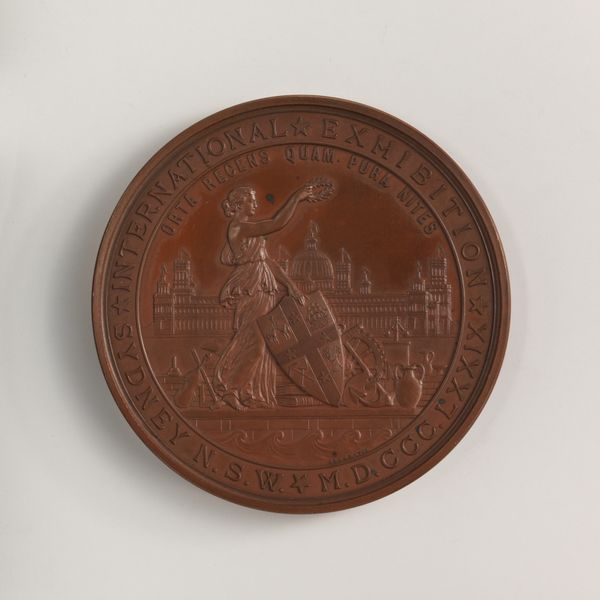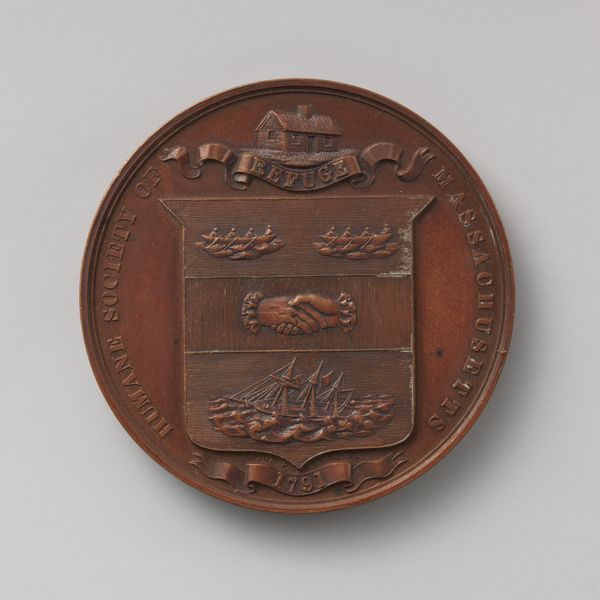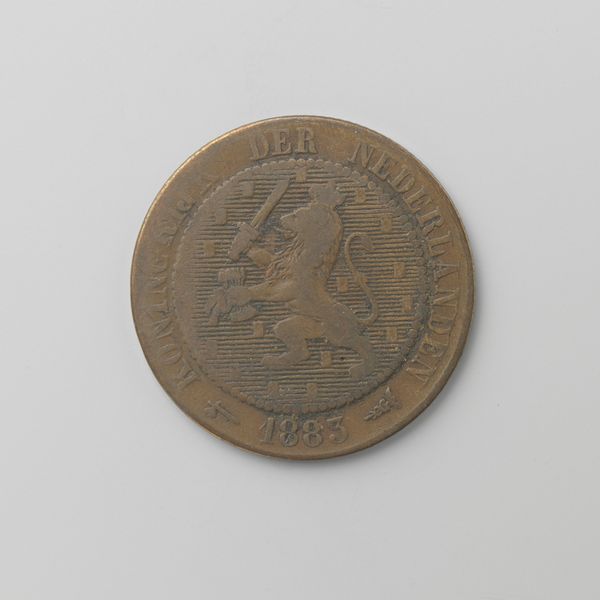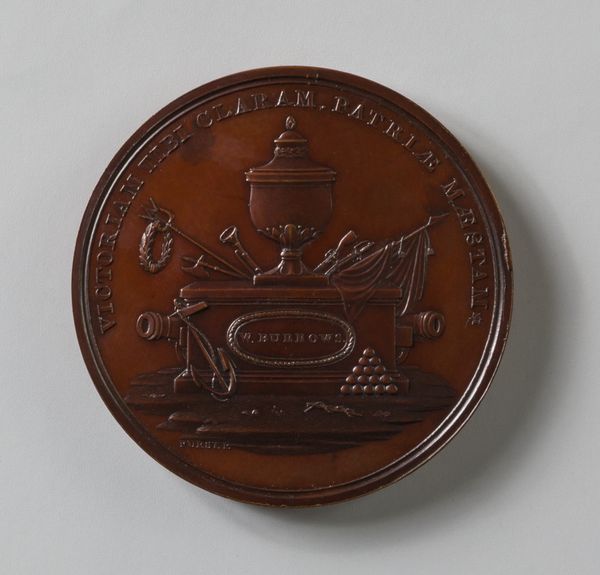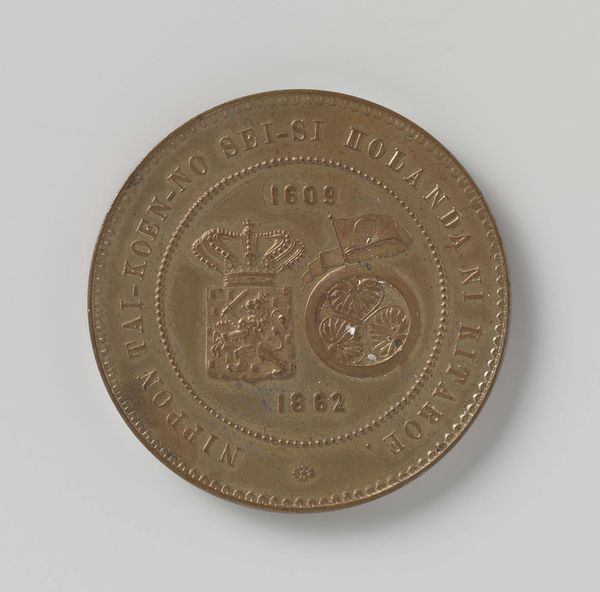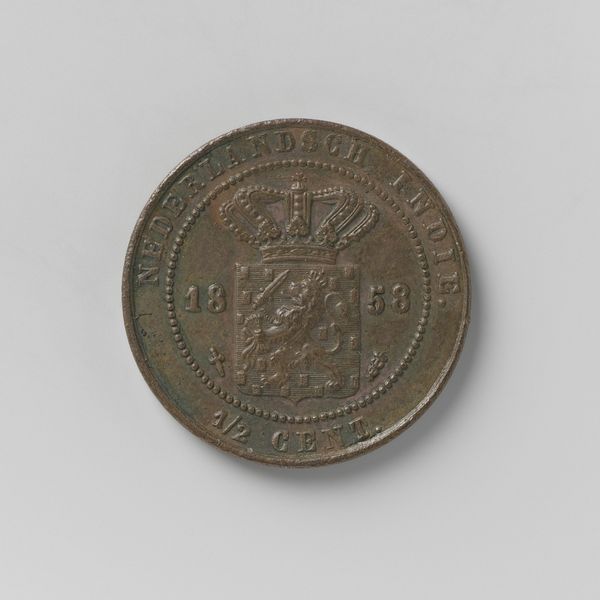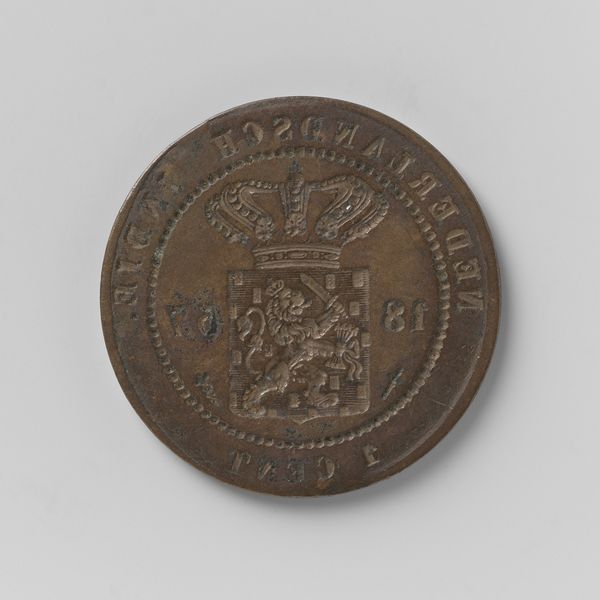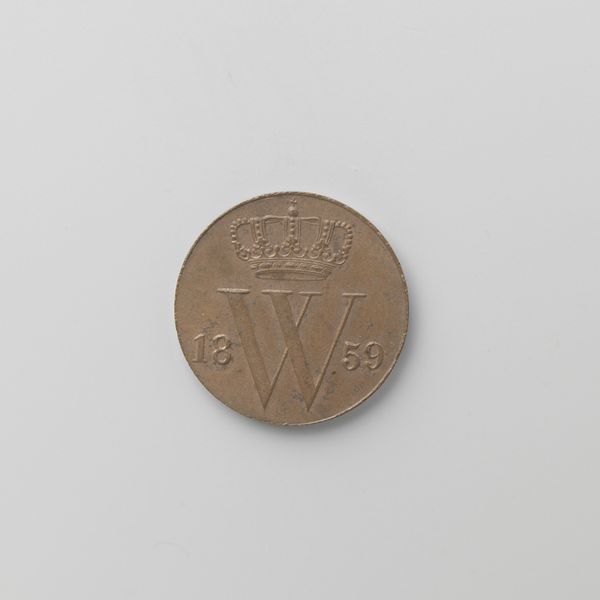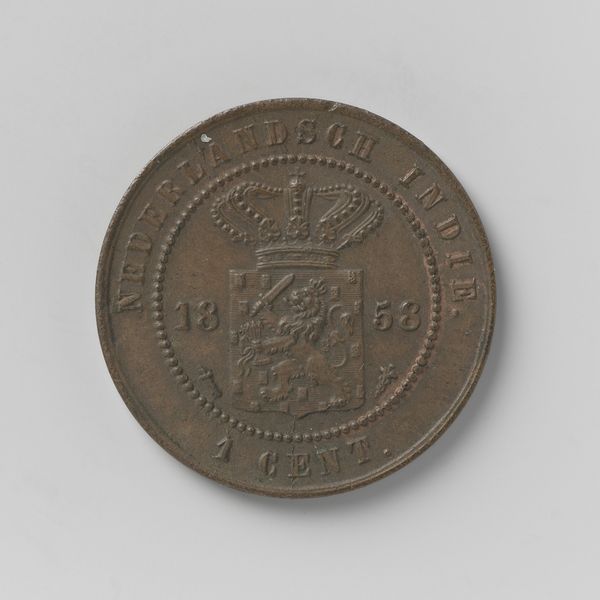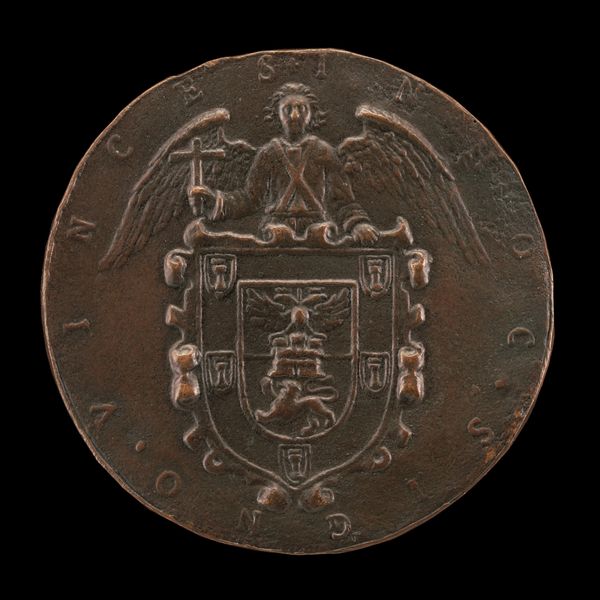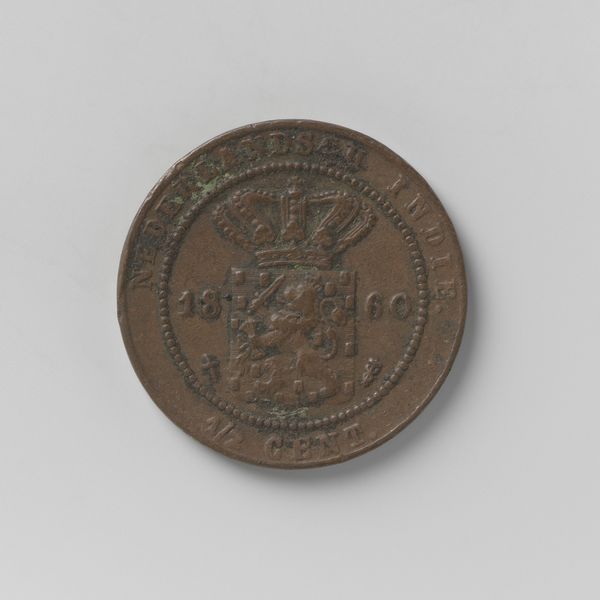
To Commemorate the Opening of the New London Bridge, by King William IV and Queen Adelaide, August 1, 1831 1831
0:00
0:00
metal, relief, bronze, sculpture, engraving
#
medal
#
metal
#
relief
#
bronze
#
ancient-mediterranean
#
sculpture
#
history-painting
#
decorative-art
#
engraving
Dimensions: Diameter: 1 1/16 in. (27 mm)
Copyright: Public Domain
Curator: Before us, we have a bronze medal crafted by Benjamin Wyon in 1831, titled "To Commemorate the Opening of the New London Bridge, by King William IV and Queen Adelaide, August 1, 1831." It's a fascinating piece of historical commemoration currently residing at the Metropolitan Museum of Art. Editor: My initial impression is one of stoic civic pride. The circular format and low relief, almost like a coin, gives it a tactile quality, but also feels rather official, if austere. Curator: Indeed, its form directly references the visual language of antiquity, consciously aligning itself with the power and permanence of Roman coinage and imperial portraiture. Notice the careful modeling and how light plays across the raised surfaces. The relationship between form and content produces a discourse that's intrinsically architectural. Editor: I see what you mean, but I'm drawn to the symbolism—particularly the City of London's coat of arms so prominently displayed. The sword in the upper left and that unusual crest at the top featuring a winged dragon supporting a shield feels steeped in centuries of history, but can you tell me what's its significance in relation to this particular moment? Curator: Context is essential, of course. The new London Bridge represented a feat of engineering and civic progress, designed to facilitate commerce and movement across the Thames. In regards to symbology it signals progress rooted in historical continuities— a visual rhetoric of sustained prosperity through infrastructure. The bridge represents societal transition towards increased fluidity and development within city. Editor: And to memorialize it, the King and Queen are included, forever linked to this structure that came to define city itself, its shape imprinted here by bronze's ageless patina. One might say then, their identity forever becoming that monument itself because both served citizens and promoted progression in the city through service within realm - at same pace bridges aid journeys upon waterways separating parts within larger unified whole. Curator: I think your reading there has interpretive force because if look precisely where sword symbol sits versus location bridge built upon location within greater scheme bridges then that provides additional framework understand what city's rulers expected: long may that transition maintain safety. This medal served an essential performative role. Editor: Quite true. In the end, both medal and the bridge embody, each through different methods a claim, where civic ambition meets symbolic immortality. The careful rendering speaks volumes about shared beliefs between ruling and people during time about meaning city's past or future through structures.
Comments
No comments
Be the first to comment and join the conversation on the ultimate creative platform.
